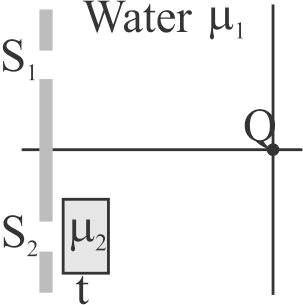368007 In a double-slit experiment the angular width of a fringe is found to be \(0.2^\circ \) on a screen placed \({\rm{ }}1{\rm{ }}m\) away. The wavelength of light used is \(600\,nm\).What will be the angular width of the fringe if the entire experimental apparatus is immersed in water? Take refractive index of water to be \(4/3\).
368007 In a double-slit experiment the angular width of a fringe is found to be \(0.2^\circ \) on a screen placed \({\rm{ }}1{\rm{ }}m\) away. The wavelength of light used is \(600\,nm\).What will be the angular width of the fringe if the entire experimental apparatus is immersed in water? Take refractive index of water to be \(4/3\).
368007 In a double-slit experiment the angular width of a fringe is found to be \(0.2^\circ \) on a screen placed \({\rm{ }}1{\rm{ }}m\) away. The wavelength of light used is \(600\,nm\).What will be the angular width of the fringe if the entire experimental apparatus is immersed in water? Take refractive index of water to be \(4/3\).
368007 In a double-slit experiment the angular width of a fringe is found to be \(0.2^\circ \) on a screen placed \({\rm{ }}1{\rm{ }}m\) away. The wavelength of light used is \(600\,nm\).What will be the angular width of the fringe if the entire experimental apparatus is immersed in water? Take refractive index of water to be \(4/3\).

